At Autodesk University 2024, company executives in their keynote speeches iterated the importance of connecting data and teams with the company’s three industry clouds, which are vital to Autodesk’s advancing work in delivering AI solutions to its customers. AI was the dominant element in the room throughout the conference, and Autodesk’s executive leaders all stressed the work they continue to do in bringing key AI-powered tools to M&E, D&M, and AECO that help its customers do their jobs more efficiently and thoroughly.
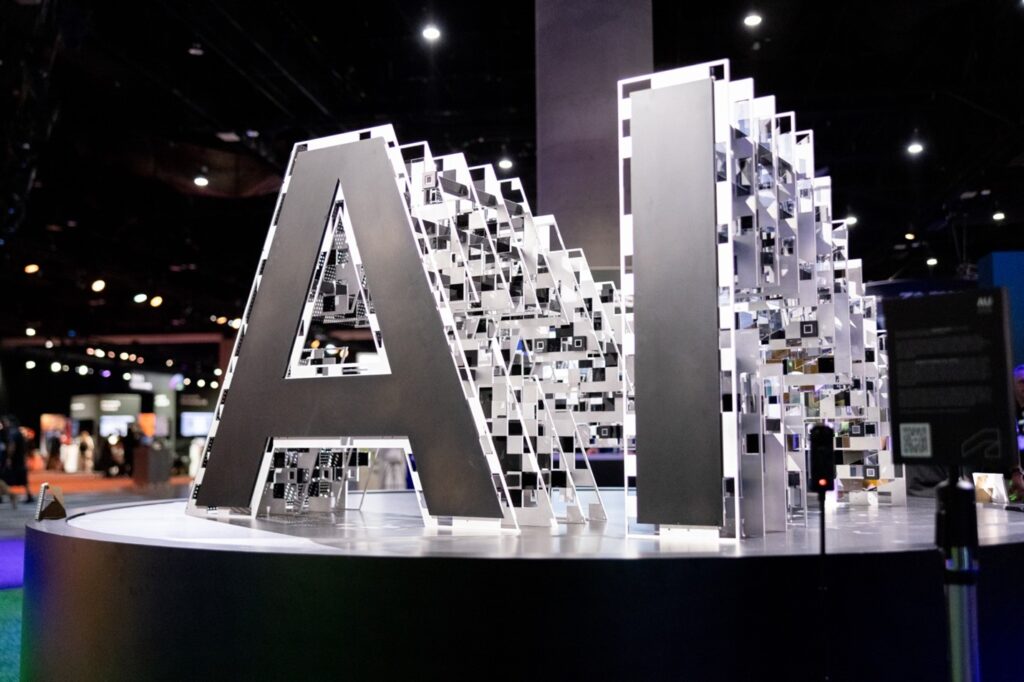
Reinvention. It’s happening across the business models and the industries in which Autodesk customers work. It’s also something Autodesk is focused on internally, reinventing itself by investing heavily in end-to-end design and make solutions powered by Autodesk AI, connecting the entire life cycle of a projects to accelerate their digital transformation and business innovation, Autodesk President and CEO Andrew Anagnost told attendees at the recent Autodesk University (AU).
Connections. Key to achieving this is to bring more structure to a customer’s data so AI can be easily applied to their everyday processes, resulting in efficiency gains. “Connecting your processes really isn’t possible without connecting your data. And to help you unlock more from your data, you need it to be better structured. This year, we’ve taken a big step towards organizing your data and making it easier to access,” Anagnost said.
Underpinning Autodesk’s industry clouds—Fusion, Forma, and Flow, announced at AU 2022—is the Autodesk data model, which serves as a hub for user design data. This allows users to access the data in granular, bite-sized chunks. In addition to this hub, there are APIs that act as spokes, Anagnost said, providing the pathways to move data where the customer needs it to go. In fact, Autodesk has released new data model APIs for both the manufacturing and AEC industries, opening up monolithic files customers are used to working with and enabling them to do things that were previously impossible or incredibly complex, such as searching across the contents of multiple models at the same time, comparing changes between different versions of a design, and delving into their historical project data so they can use AI to build new value from it.
Simple enough? Not quite. The premise of reinvention through AI by connecting data and making it easier to access and utilize applies across industries. However, it is not a one-size-fits-all situation.
“Reinvention looks different depending on which industry you’re in,” Anagnost said. “In design and manufacturing, new factory construction is up substantially, and those factories are populated with newer digital tools. Supply chains are reforming. Manufacturers are using AI to prototype designs. Faster reinvention is happening in M&E, as entertainment studios are looking for greater efficiency, and some are turning to AI to augment the work they are already doing. It’s a notable shift focused on embracing new ways of working. And AEC-connected data across the design and build process is addressing one of the biggest pain points and reinventing how [users] meet accelerated timelines, draw powerful insights, and make better decisions.
As Anagnost noted, we’re all at different stages of this AI journey—industries, customers, everyone. And each industry cloud is forming and expanding at different pace.
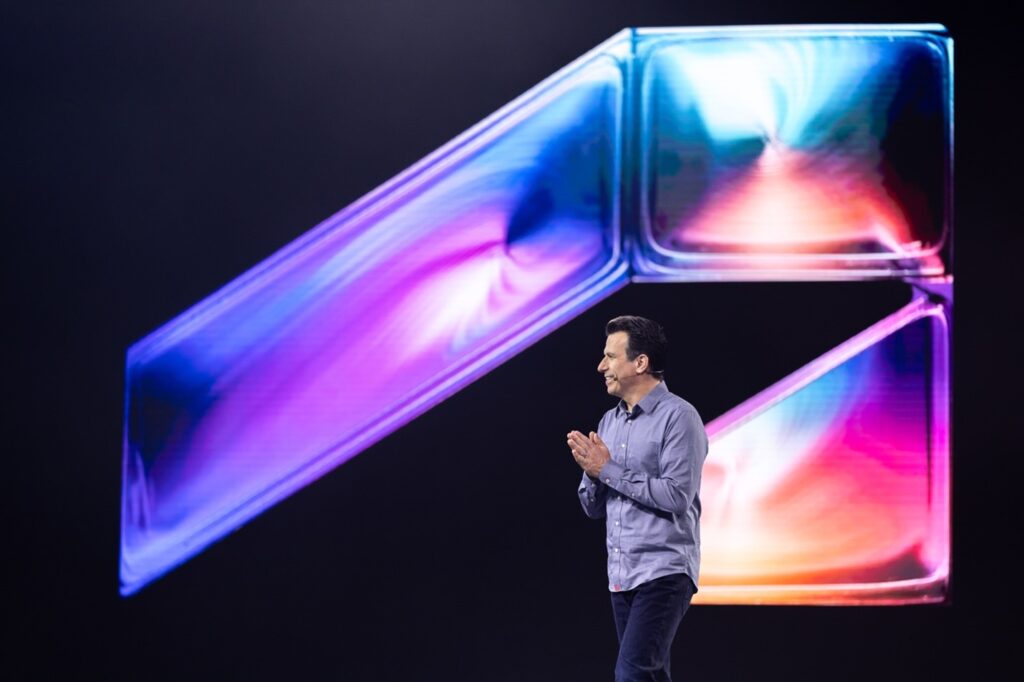
Media & Entertainment
It’s no secret that AI is a hot topic in the media and entertainment industry, a segment of Autodesk’s business where earlier AI efforts have been directed, adding AI capabilities to its existing creative tools to help accelerate artist workflows. Most of that effort has been geared toward automating tedious tasks. For instance, AI in Arnold via a project with Intel incorporated the Intel Open Image Denoiser (OIDN) library into the Arnold renderer v7, denoising results 10 to 20 times faster, Autodesk claims. Also, the Nvidia OptiX Denoiser is available as a post-processing effect in Arnold.
Meanwhile, Flame’s ML Timewarp lets users automatically create an intermediate frame between two others for retiming shots. In early August, Autodesk introduced a new AI-powered scheduling tool, Flow Generative Scheduling. The company’s recently released ML Deformer adds new AI capabilities to Maya, enabling animators to interactively work with characters by processing complex deformation systems and representing them with a fast, machine-learned approximation, posing characters in real time.
Autodesk was able to take a big leap forward with AI capabilities following its purchase of Wonder Dynamics a few months ago. Motion Dynamics’ Wonder Studio is an AI tool that automatically animates, lights, and composes a CG character into a live-action scene. Autodesk is expanding the capabilities of Wonder Studio, which combines AI with established tools such as Maya, enabling artists to drag and drop a CG character directly into a live-action scene and, where needed, export the elements into the 3D software of their choice, to finesse and deliver the final shot. At AU 2024, Autodesk further extended this technology with Motion Prediction, which anticipates character poses even when the view of an actor is obstructed by an object and produces poses that are more natural with less shaking and noise.
Also, Autodesk Research is working on a prototype tool called neural motion control, which enables animators to direct a character’s actions using just a few keyframes and a neural network. Autodesk contends this will save animators significant time, while maintaining the low-level control they are used to, so they can focus on crafting a unique performance for bipeds and quadrupeds alike.
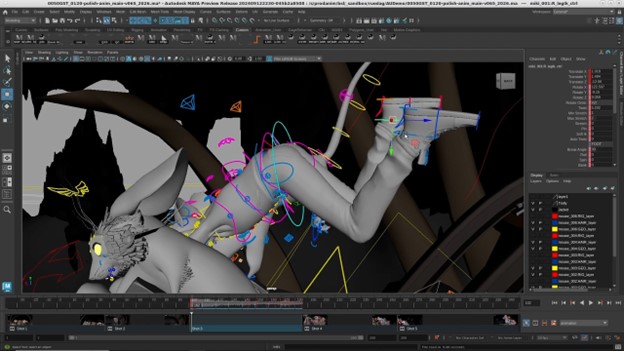
The company is also continuing development on Flow, its M&E industry cloud, connecting workflows, data, and teams across the production life cycle, from early concept to final delivery. Artist workflows are being enhanced with new Flow features that connect to M&E desktop solutions, one of which is Flow Animating in Contextfor Maya, making it possible to show the creative intent of the editor by connecting data from Flow Production Tracking to Maya and vice versa. As a result, animators will be able to see the editorial timeline as they work.
And at AU, Autodesk launched the new Flow Graph Engine API that allows developers to run Bifrost graphs in the cloud and build custom compute solutions for their studio.
Design and Manufacturing
The key to having meaningful, efficient AI and collaborative workflows is data, along with desktop-to-cloud and cloud-to-cloud connections, said Autodesk’s Stephen Hooper, VP and GM of product design and manufacturing cloud solutions. This is enabled by APIs and Autodesk’s Manufacturing Data Model, which the company is opening up to the market, making the data in that model more granular and accessible for everyone. Accordingly, Autodesk announced a new Manufacturing Data Model API for cloud-to-cloud connections with other providers. So, information from external partners will remain available in Fusion to anyone in the team accessing that data, whether they’re using Fusion to manage the project or core Fusion for engineering and manufacturing. (Fusion is collaborative cloud-enabled 3D CAD, CAM, CAE, and PCB software, around which the D&M industry cloud is built.)
As Mike Haley, senior VP of research had pointed out, integrated AI into the CAD, AEC, and D&M industries is a less-traveled path but one that Autodesk is committed to taking. So while the going may be slower than it is in M&E, it is going. For instance, last year, the company introduced a drawing automation tool that reduces the time required to create 2D drawings from a 3D model in order to manufacture parts. This brings massive time-savings, considering that analysts estimate 40% of a designer’s time is spent creating those drawings, Haley noted. Now, Autodesk AI capabilities will further increase the speed and efficiencies of Fusion when generating the drawings, as Autodesk AI will create and lay out a drawing sheet for each component in the model. It will start applying styles and standards, and eventually perform tasks such as identifying and removing common components like fasteners that don’t need to be included in the drawing set.
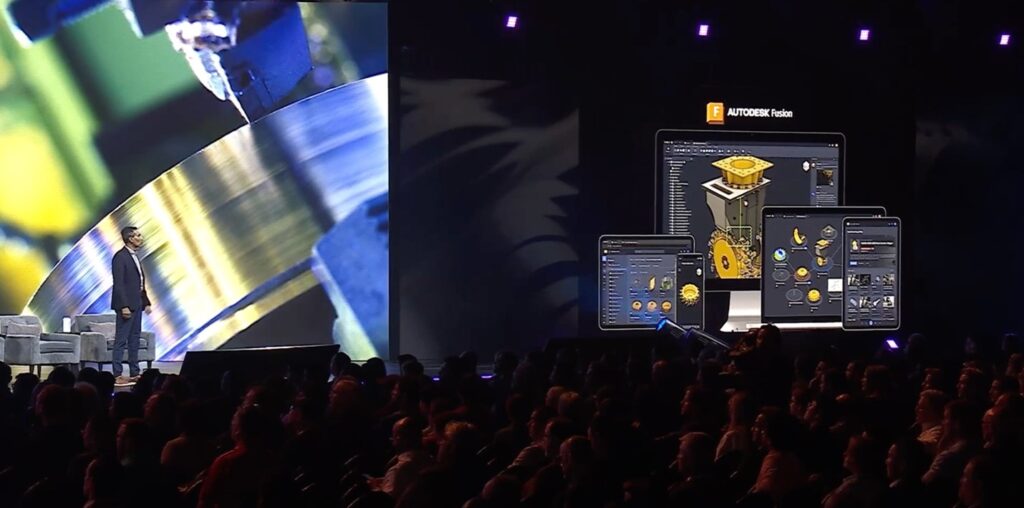
In addition, Autodesk is bringing AI to the design studio, announcing that later this year, it will introduce AI-powered form exploration in Alias, based on tech from last year’s acquisition of BlankAI. This AI tool can learn from an automotive brand’s historical designs and styling language and enables automotive designers to generate and refine ultra-realistic new 3D exterior designs in seconds while maintaining the brand’s design cues. Hooper describes the tool as an augmentation of the designer, there to assist in the creative process by generating native Alias geometry so that the designer can continue to interact and iterate on initial ideas.
AECO
Autodesk has brought major digital change to the AECO industry over the years—first moving from analog to CAD more than 40 years ago, followed by the introduction of BIM 20-plus years ago, and then moving to the cloud and having connected BIM about 10 years ago. Now, the company is entering the fourth major digital transformation with Autodesk Forma and outcome-based BIM, in which teams define their desired project upfront (costs, carbon impacts, etc.) and use Autodesk AI to generate a range of options that meet their criteria.
“We are building Autodesk Forma, our AECO industry cloud, to connect your data and applications, across the entire BIM life cycle,” said Amy Bunszel, Autodesk AEC EVP.
Autodesk plans to use Autodesk Docs—a cloud-based document management and common data environment in Autodesk Construction Cloud—to move customers forward as it builds Forma. Autodesk says it is transforming Docs into a rich data ecosystem in which granular data will be decoupled from files and unlocked, improving how teams collaborate, while expanding the ecosystem of AECO software solutions like AutoCAD, Revit, Civil 3D, and emerging products like Workshop XR, Tandem, and Inform Design for Revit, as well as numerous third-party applications from the ecosystem.
Earlier this year, Autodesk released the AEC Data Model API, calling it an important step towards enabling granular data for Autodesk Docs users. In another milestone towards outcome-based BIM, Autodesk said Forma is now connected to AutodeskDocs, its AECO data repository and, over time, will bring with it new workflows and opportunities that connect teams and project data together for unprecedented collaboration.
Forma’s connection to Docs will enhance the integration between Forma and Revit, enabling users to reference Forma designs directly in Revit via a seamless, cloud-based workflow, Bunszel said.
At AU, Autodesk also announced it is expanding its partnership with Esri with integration between the companies’s platforms. In addition to the existing Esri terrain data available within Forma, there are plans to incorporate an array of contextual geographic data from ArcGIS.
“This is the data-rich future and is powered by the Autodesk Forma industry cloud and the Autodesk Design and Make platform,” said Nicolas Mangon, VP of Autodesk AEC industry strategy.
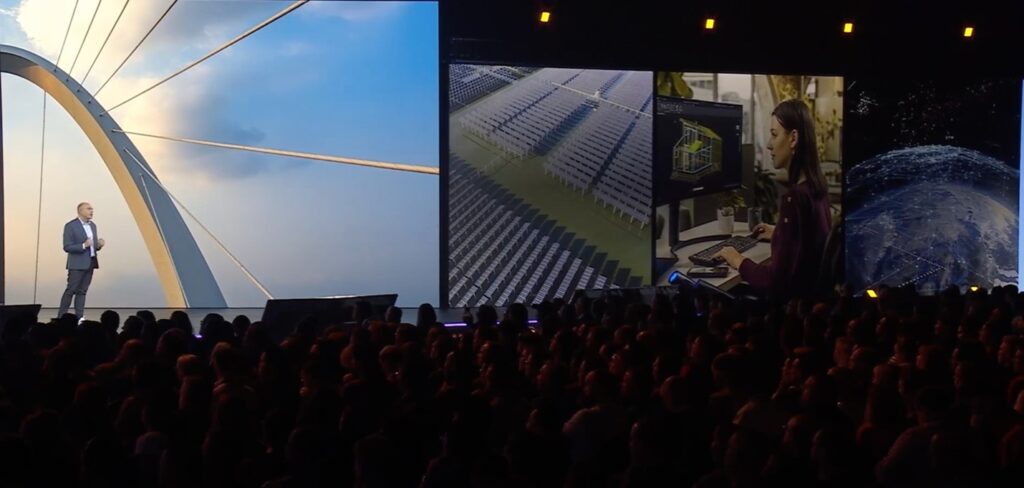
In terms of construction, the Autodesk Construction Cloud (ACC) remains focused on connecting the full construction life cycle, from pre-construction to handover. With Docs also serving as a central data hub, ACC and Forma are on a connected development path that will converge over time.
At AU, Autodesk announced the use of AI-powered Autodesk Assistant in Autodesk Construction Cloud (ACC). The beta release lets users ask questions about their specification documents. For instance, customers can use everyday language to ask the assistant specific questions, generate lists of items, or create project updates. There are other new tools that connect workflows between pre-construction and construction management. As Mangon noted, Autodesk is investing in its core products, including Revit 2025 and AutoCAD 2025, as we progress towards the future of BIM, with additional advancements coming down the pike.